The Corsair Gaming K95 RGB Platinum Mechanical Keyboard Review
by E. Fylladitakis on March 7, 2017 8:00 AM EST- Posted in
- Peripherals
- Corsair
- Cherry MX
- Mechanical Keyboards
- RGB
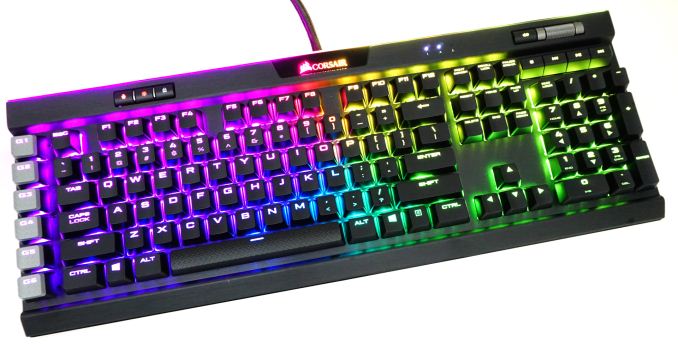
Corsair is one of the first and largest players in the mechanical keyboards market. Their exclusive deals with Cherry, the most reputable manufacturer of mechanical key switches, allowed Corsair to slightly outpace their competition. For example, Corsair held the exclusive for Cherry MX RGB switches for a year, which made the K70 RGB one of the most popular top-tier gaming keyboards in 2015, and also held the exclusive for Cherry MX Speed switches for a year, making the K70 RGB RAPIDFIRE the only keyboard that had them installed in 2016.
One could easily notice that Corsair has been using the same two core keyboard designs, the K70 and the K95, for several years, only changing the switches and/or adding features like on-board memory and programmability. The tenkeyless K65 is also based on the same design as the K70, missing only the keypad and the audio volume wheel, and is only available via Best Buy. Corsair did release new designs, such as the plastic STRAFE in 2015, but never ceased upgrading the K70 and the K95, which still are the main focus of the company.
This year Corsair has something a little different in store for us. The name of their new keyboard is the Corsair Gaming K95 RGB Platinum, and features the Cherry MX RGB Speed mechanical switches that the K70 RGB RAPIDFIRE did. When Corsair first mentioned the name of the keyboard to us, we wrongly assumed that it would be nothing more than the classic K95 with Cherry MX RGB Speed installed. Despite the name, the K95 RGB Platinum is not sharing the same core design as the previous K95 models, but instead seeks to bridge the gap between the classic K70 and the overextended K95.
Packaging and Bundle
Corsair supplies the K95 RGB Platinum in a very sturdy brown cardboard box covered by a thin, glossy exterior packaging. The artwork is dark with yellow accents and aesthetically focused on a picture of the keyboard itself, following the same theme as the rest of Corsair’s peripherals lineup.
Alongside with the keyboard, the company supplies a couple of basic quick-start and warranty leaflets, a set of extra keycaps and a plastic keycaps puller. The extra ten keycaps are grey and have contoured, textured top surfaces that are supposed to assist tactile feedback while gaming. The first set is for FPS gamers and the second for MOBA gamers. Both sets are correspondingly contoured and textured. Two keycaps, the W and the D, exist in both sets but have different contours as a result.
The K95 RGB Platinum comes with a full size wrist rest that is unlike any other wrist rest that we have seen before. The wrist rest is a plastic frame that attaches to the keyboard, with a removable contact surface. The surface of the wrist rest is made of a thin steel sheet that is fully covered with a soft rubber-like material. Magnets inside the plastic frame allow the steel surface to be easily attached and removed in seconds.
Why Corsair made the surface removable is simple, and easy cleaning is not the primary reason. The surface of the wrist rest is two-sided, with one side being plain and very soft, while the other is textured and with good friction. This allows each user to select between grip and comfort, or switch between the two in just a couple of seconds.


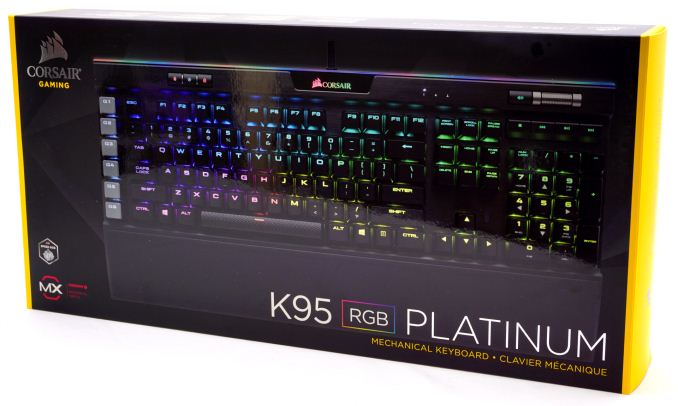
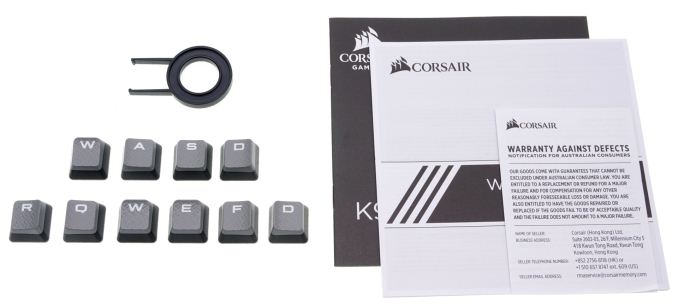
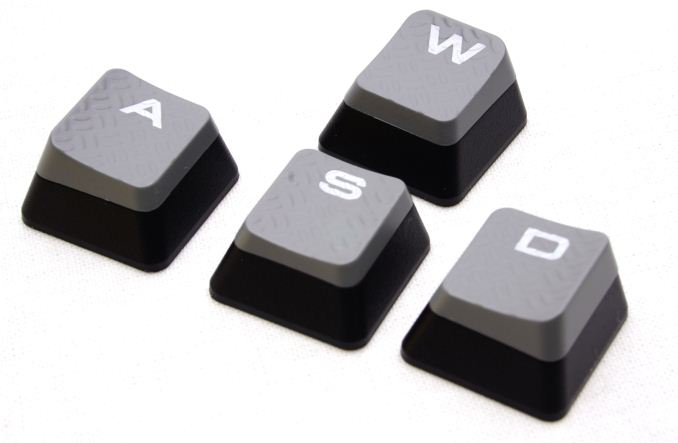
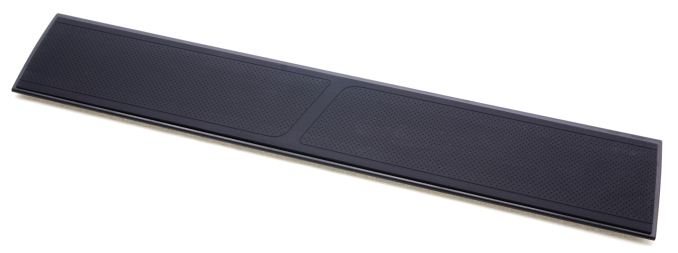
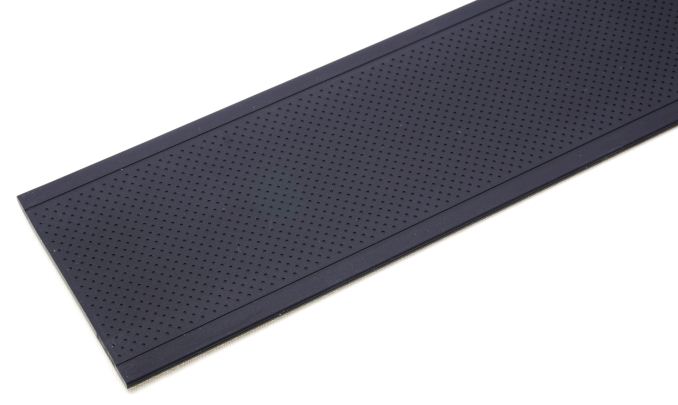
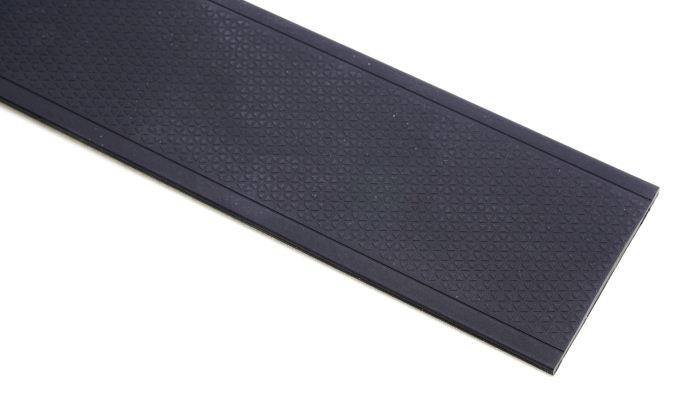








37 Comments
View All Comments
zeeBomb - Tuesday, March 7, 2017 - link
This is a keyboard I'll probably never be able to own...qqlyeoh - Thursday, March 9, 2017 - link
What's the min/avg/max latency/input lag in milliseconds?If any of you are about to respond by mentioning the USB polling rate or similar it proves you don't know what you're talking about on this subject.
Because saying the USB polling rate is high and thus the input lag has to be low is like saying monitors with a high refresh rate will always have low input lag. And that's not true: https://displaylag.com/display-database/
Sarchasm - Friday, March 10, 2017 - link
That's an inaccurate comparison, and your instinct to compare it to monitors by posting a generic link rather than simply explain the need for response time information points to you not really understanding what it means either. Polling rates can help significantly (you're far more likely to register an input within the same frame with a 1ms polling rate vs. 10ms), but there are other considerations to that (such as whether the peripheral's controller keeps the polling window open, or simply polls at intervals).This is all functionally irrelevant though. Anyone asking this question seriously is looking for a reason to blame their equipment for their performance, when the margin of error is far more likely to be their own lack of response time and in-game skill. It's essentially a null factor - even in LAN play.
lyeoh - Monday, March 13, 2017 - link
1) Yes polling is important HOWEVER we're talking about gaming keyboards (as per the article) so the polling should already be at the max (1000Hz). If a USB keyboard is polling at low rates it's effectively not a gaming keyboard, or something is wrong (OS etc).2) There really are significant differences in keyboard latencies: wwwXblackboxtoolkitXcom / responsedevices.html
wwwXpstnetXcom /eprimedevice.cfm (broken links due to anandtech spam filter)
So far I have not seen any independent measurements proving that gaming keyboards are all practically the same with respect to latency, so are we supposed to take it by faith?
3) Even if you can't get the absolute numbers you can get relative numbers by comparing each keyboard with the same mouse- e.g. use the same mechanical setup to press the spacebar on the keyboard AND the mouse button at the "same" time. See: pastebinXcom/cckQWRwP
You can record the sound of the presses at 48KHz and view the recording to adjust things so that the clicks are truly close to the same time.
Then after doing a number of measurements you can swap the keyboard with other keyboards and compare the results. For example, I have a logitech PS/2 keyboard that is really slow (50ms slower than my mouse!), and I had a Kalashnikov AK990i keyboard that was faster than the Logitech BUT still slower than my a4tech X7 G800V (which has stuck key issues).
4) You claim it's a null factor "even in LAN play" and yet the evidence is against you.
Even 30ms is significant in the twitch gaming world. If everyone has ping times of >500ms then 30ms is not significant. But in LAN play it's like someone playing on the LAN with a ping of 2ms against a someone with a ping of 32ms.
Where are the benchmarks proving the latency differences for these gaming keyboards are insignificant? Thus my original question.
5) Last but not least your claim that I'm trying to blame my equipment for my performance is impolite and not a valid nor proper argument. If you choose to argue at this level you have little to contribute to a proper technical discussion.
Irishgamer01 - Thursday, April 6, 2017 - link
NICE RGB, BUT TRUELY AWFUL AS A KEYBOARD.CONSIDERING THE COST. AVOID.
OBVIOUSLY I OWN ONE.
Glenwing - Thursday, December 28, 2017 - link
Typo in the second sentence:"and used it to create the a keyboard regardless of the cost."
Glenwing - Thursday, December 28, 2017 - link
Second sentence of the conclusion I mean